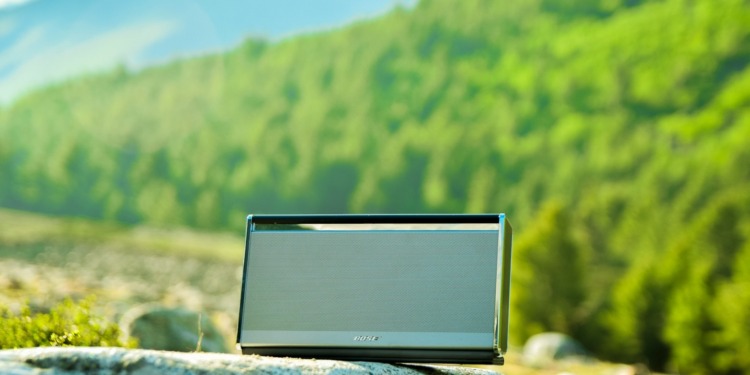Portable speakers are becoming increasingly popular, not just among music lovers and gadget enthusiasts. Solar-powered models are the latest craze, but is it really necessary to upgrade to these models?
Speakers don’t normally consume a lot of energy. That’s part of what made portable models, large and small, so ubiquitous. But if the energy consumption is so low, are solar-powered speakers worth it? Typically, speakers are designed to consume minimal energy, making them highly popular. However, the question remains: are solar-powered speakers worthwhile?
Why buy a solar-powered speaker?
Portability is one of the key features of portable speakers. They are designed to be used when your phone’s built-in speaker is insufficient, such as when you’re on the move. If you’re listening to music in your living room, you may have a better option.
If you rarely venture out of your home, having a solar-powered speaker might be useless to you. In that case, you should stick to a regular speaker for your music needs, especially if you don’t move beyond the front yard. But what if you like camping or find yourself without electricity until bedtime? In such cases, a solar-powered speaker might come in handy.
When considering solar-powered speakers, it’s important to note that not all are created equal. For example, Goal Zero Rock Out 2 is a popular option.
Goal Zero Rock Out 2 Solar Speaker
The Rock Out 2 speaker features a unique way of charging, but most reviews tend to overlook that fact. Despite being Goal Zero’s budget flagship product, it is a fairly standard speaker in terms of technical specifications. It is similar in size to the popular JBL Flip, though slightly bulkier. Although the JBL Flip has better audio quality, especially on the lower frequencies, the Rock Out 2 has a longer battery life.
The Rock Out 2 has a battery life of up to 20 hours at full charge, which may make you question if you even need solar power assistance. However, the limitations of this device could potentially be dealbreakers for some.
It only takes a couple of hours to fully charge the batteries using a normal plug, which is reasonable if you have access to a power outlet. However, if you’re relying solely on the solar panels, it could take up to 8 hours to fully charge the batteries. This means you’d have to set up the speaker early in the morning and wait until the afternoon for it to be fully charged. And if there are any stray clouds overhead, it could take even longer.
The Rock Out 2’s solar panels are constantly active. When exposed to sunlight while playing, the battery life can extend up to 10 hours. This feature may help overcome the slow charging issue, especially since the battery can last for up to 30 hours.
Related Articles: Sunlight to Power: Evolution and Key Facts About Solar Energy | Biden Unveils $6 Billion Climate Investment Package | EU Unveils €4 Billion Funding Boost for Decarbonization Technologies
Urbanista Malibu Solar-powered Speaker
The upcoming Urbanista Malibu aims to solve a problem that affects all other solar speakers. This tiny speaker doesn’t have any visible solar panels. The small product would have occupied its entire surface, leaving no space for the speaker.
To solve this problem, the Malibu is covered entirely in Exeger’s Powerfoyle, a plastic-like material that acts like solar panels. It can capture energy even from artificial lights and powers any device built from it.
Solar-powered speakers like the Malibu need assistance or a lot of time to function properly. In contrast to other Powerfoyle products, these speakers consume more power than they generate. The Solar power can only prolong the battery life if the Malibu is used every few days. However, even mild light can increase the default autonomy from 30 hours to 45 hours.
According to early reviews, the sound quality is fine for the size. Low frequencies are usually at risk when talking about speakers this small, but this isn’t the case.
According to Mårten Sahlén, project director at Urbanista, you might never need to charge your Malibu. It all depends on the weather. “If the speaker is used twice per week in direct sunlight (50,000 Lux) for a total of seven hours, and then in standby mode in a well-lit window (20,000 Lux) for three hours, and in a less well-lit window (5,000 Lux) for five hours, the speaker should never run out of battery power.”
Editor’s Note: The opinions expressed here by the authors are their own, not those of Impakter.com — In the Featured Photo: A portable speaker sitting on a rock. Featured Photo Credit: AMIT AGNIHOTRI.










